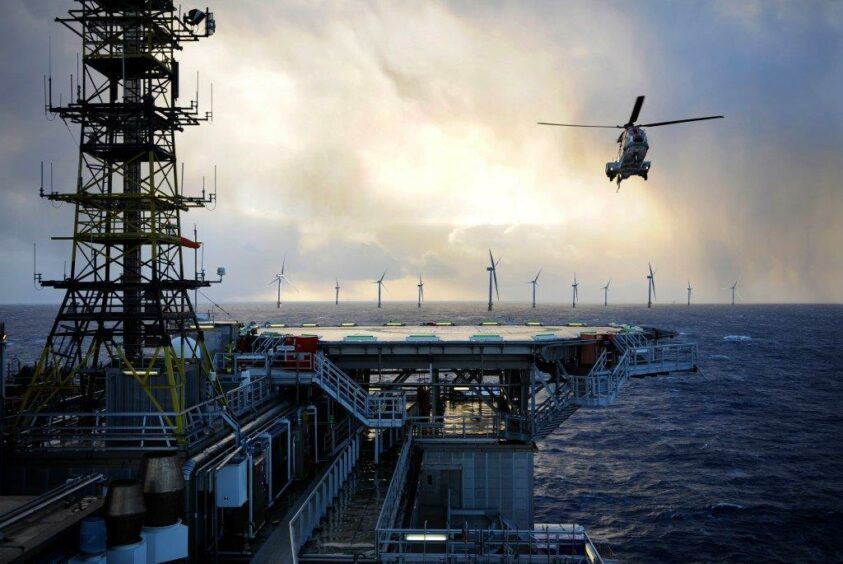
Last month, Crown Estate Scotland (CES) provided some long-awaited information about the new leasing round for Innovation and Targeted Oil and Gas (INTOG) projects. It offered clarity on the proposed application process and indicative timelines for each phase, as well as an outline of how applications would be evaluated.
Though undoubtedly a step in the right direction, keen observers will have noticed several significant disconnects between the INTOG information from CES and the outcomes set by the UK Government in its North Sea Transition Deal (NSTD), which include supply decarbonisation, supply chain transformation and hydrogen production. If achieving these outcomes is critical to the energy transition of offshore oil and gas production in the UK, then the proposed selection criteria for INTOG must be re-oriented towards these goals.
Turning to the first of these disconnects, INTOG should be a competition for carbon abatement with schemes assessed by reference to the emission reductions achieved. Yet the process as announced focuses on how much each applicant is willing to pay CES per km2 of seabed. This will be the “principal factor in bid assessment”, with a weighting of 70%. What CES seem to have overlooked is that this approach risks undermining the success of the INTOG process in achieving outcomes set by the NSTD in several ways.
For example, if the overriding policy objective is decarbonisation, then this should be reflected by scoring criteria and weighting that values emissions reduction and doesn’t relegate climate concern to CES commercial interests. Additionally, if seabed lease costs will be passed through to the very oil and gas companies the NTSD is designed to support, then this approach could seriously impact the economic viability of operations, incentivising earlier withdrawal from the North Sea or discouraging a switch to green power in the near term. Furthermore, as significant offshore opportunities open up globally, developers may focus their efforts elsewhere rather than fight a commercial competition for seabed in UK waters.
A further area of NSTD/INTOG disconnect is clear to see in relation to both production decarbonisation and supply chain transformation. If the over-riding purpose of INTOG is to enable the offshore oil and gas industry to achieve the greatest emissions reduction achievable in the time available, then scale and speed of delivery will be critical and should receive commensurate weighting.
Taking deliverability capability as a given, basin-wide schemes reaching the greatest number of platforms and achieving the most significant emission reduction should be preferred to more localised solutions. As well as the carbon abatement benefits already noted, this would enable a more structured approach to regenerating, transforming and in some cases forming, the supply chain required to deliver the electrification solutions to platform operators in the timeframes required by the NSTD.
When finalising the INTOG leasing process, planners should not succumb to the superficial attraction of smaller, ad hoc, more localised schemes, which serve the interests of a limited cluster of platform operators. Such schemes could create unfair barriers to other operators with less capital resources, resulting in future exposure to carbon taxes and creating far greater risk of smaller operators ceasing operations early – this is at a time when the UK starts to wrestle with the policy imperatives of energy transition and energy security. Smaller schemes would also create significant supply chain confusion – not the NSTD transformation outcome – as multiple participants across numerous supply chains compete for limited infrastructure and other resources.
There is also a clear NSTD/INTOG disconnect with regards to hydrogen production. INTOG creates a unique opportunity for a dramatic expansion of green hydrogen production, enabling the UK to achieve a key NSTD outcome and meet its hydrogen economy targets well ahead of schedule. Bid evaluation and weighting criteria should reward schemes that integrate green hydrogen production with offshore platform electrification.
There is, of course, an inherent conflict of interest in the INTOG process as currently proposed by CES. Operators of oil and gas platforms are entirely free to apply for seabed rights as part of a scheme to electrify their operations. As part of the INTOG process, applicants will be required to submit a letter of intent with platform operators for power offtake. If an operator intends to submit an INTOG proposal, why would it negotiate a letter of intent to support an applicant with a competing scheme. Will CES recognise the conflict of interest, and the anti-competitive mischief it may promote? Is the solution simply to disqualify operators and field owners from participating in the INTOG? The answer is not immediately clear, but the conflict of interest at the heart of the matter is a noticeable blemish on the proposed plans for the INTOG leasing round.
In conclusion, the NSTD sets an ambitious and aggressive timetable for decarbonisation of offshore production. Though welcomed, the INTOG process, as outlined recently, is at risk of failing to deliver key outcomes identified in the NSTD. It is not too late to revise the evaluation criteria and ensure that the INTOG process, when finally open, explicitly rewards schemes structured to achieve those primary NSTD outcomes. The focus must be on schemes that offer basin-wide solutions to all offshore operators, and on carbon abatement instead of revenue from seabed rights. As it stands, there is a very real risk that the weightings proposed by CES and the absence of clear connections with its key outcomes drive the NSTD onto the rocks around the very communities it was intended to protect.
Recommended for you

 © Supplied by farrer kane
© Supplied by farrer kane